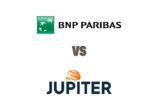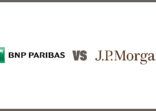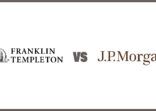A convertible bond is a type of debt that can be converted to equity at a pre-determined rate. It is equivalent to a security consisting of a traditional bond and a call option, usually issued at a strike price that is higher than the current price of the stock.
“The beauty of convertible bonds is that you’ve got protection from the bond component,” Machu told FSA. “If the company does not go into default you get the coupon that the corporate bond delivers, and you have a source of upside given by the call option.”
Convertible bonds have been around for more than a century. They should not be confused with contingent convertibles (cocos), which are a relatively new innovation.
Traditional convertible bonds are issued by all types of companies but primarily by mid- and small-cap companies, according to Machu. Financial companies tend not to issue traditional convertibles, with the exception of real estate investment trusts (REITs).
As they carry a potential for equity gains, the yields at which convertibles are initially sold to investors tend to be lower than those of an equivalent traditional bonds. Historically, by issuing convertibles, companies tended to save around 30-40 basis points on the cost of debt, according to Machu.
The global financial crisis of 2008 brought a dry spell for convertibles because the low interest rate environment made them less attractive to issuers. As the rates started edging up in the last couple of years, issuers have been coming back to the market, Machu noted. This new flow has been able to replenish the supply of convertibles that were exercised in 2016 and 2017 as equities rallied, keeping the size of the universe relatively stable.
US convertibles account for around half of the global market, the other half being Europe and Asia.
Managing variables
The M&G Global Convertibles Strategy is managed by Léonard Vinville, who is assisted by two deputy managers. The team has a lot of variables to manage. A convertible may behave as an equity, if close to conversion price, or as a pure bond, if the stock price is low. The fund manager can buy additional option contracts to increase or to decrease the convertible’s sensitivity to the stock price, depending on his views.
When the stock rallies above the strike price, the manager would usually convert the security and sell the stock. But if bullish, he might hold onto it, buy a traditional bond of the same issuer and a put option to recreate a similar return profile as the initial convertible.
The global universe of convertibles consists of around 2,000 names. In order to ensure liquidity, the M&G team considers only around 850 issuers with market cap more than $1bn. The team’s multi-step, bottom-up analysis focuses on the equity and credit components of each issue, as well as the option valuation.
The fund usually holds around 100 names in the portfolio, Machu said. A position would be sold to take profits after a strong rally or if a company’s fundamentals have changed and its prospects, both on the equity and the bond side have declined, he added.
Despite the apparent win-win positioning, with equity-like return upside and bond-like downside protection, convertibles carry risks. The risk of default is as pertinent as that of regular corporate bonds. (Convertibles come at various tiers of debt seniority).
On the macroeconomic side, while a gradual, anticipated rise in interest rates would negatively affect the price of the bond component of a convertible, it is likely also to boost the equity market, thereby lifting its call option component and mitigating the loss.
However, conditions that would affect both equities and bonds, such as an unexpected hike in rates, might depress both equity and bond market. Convertibles would then suffer on both sides.
Three-year performance of the M&G Global Convertibles Fund vs its benchmark, category average, the MSCI AC World Index and the Bloomberg Barclays Global Aggregate (bond) Index.


















